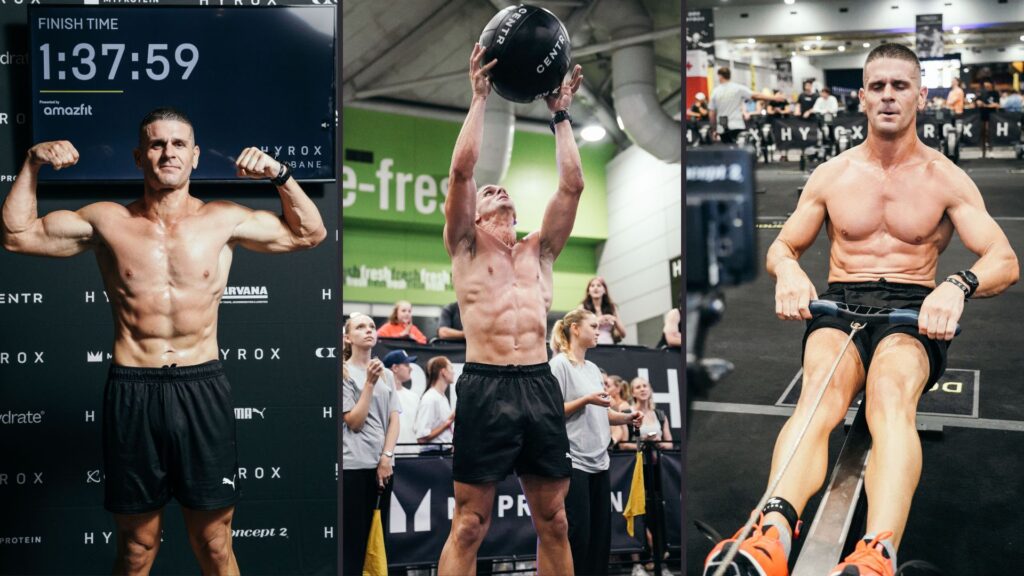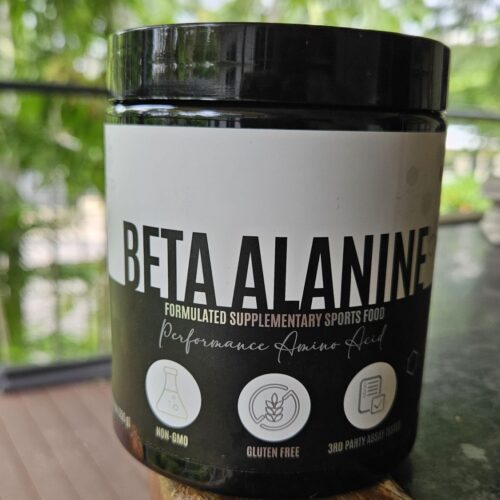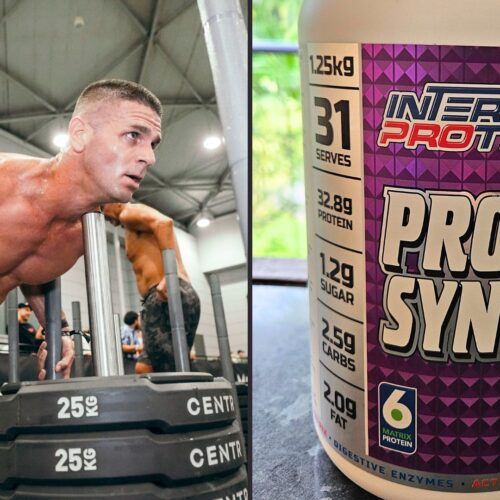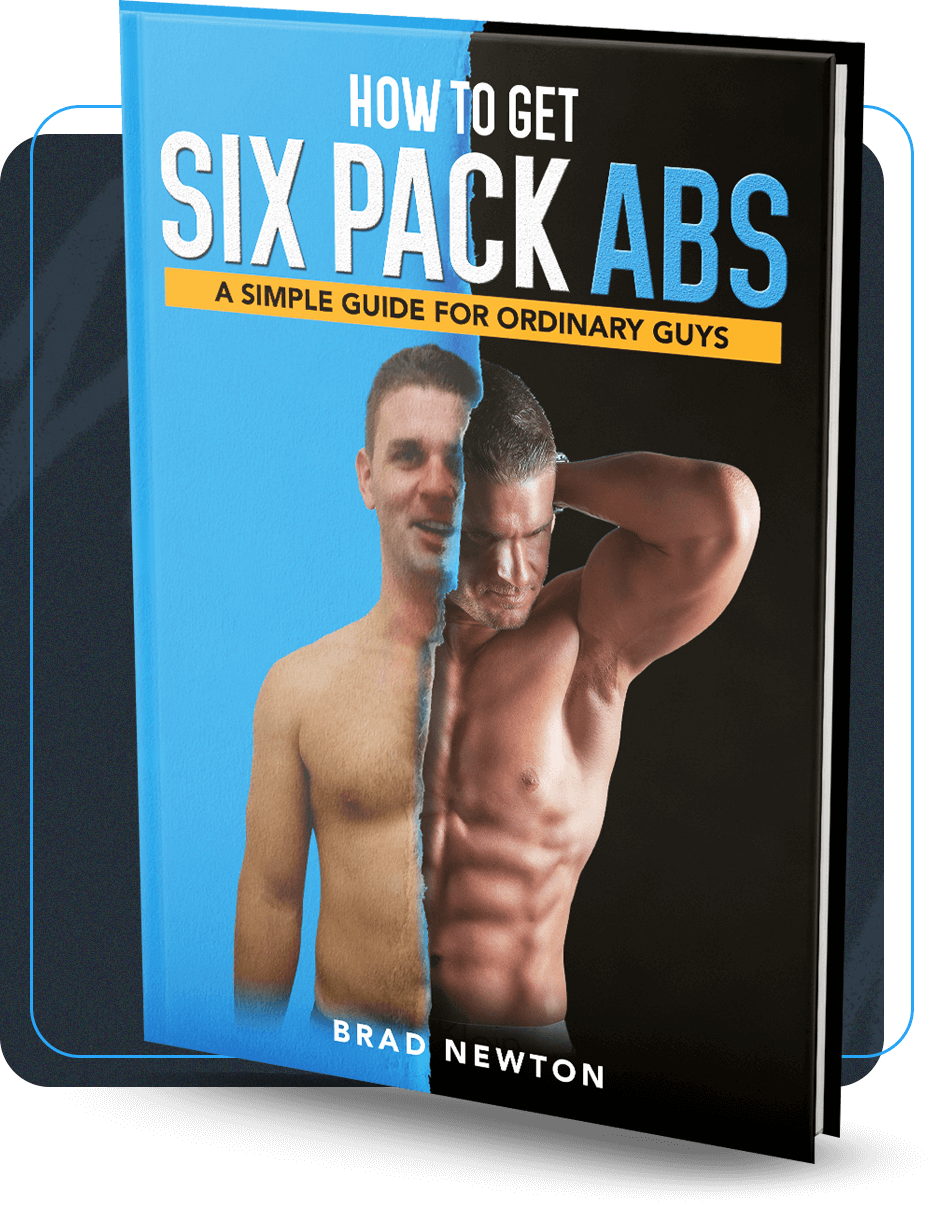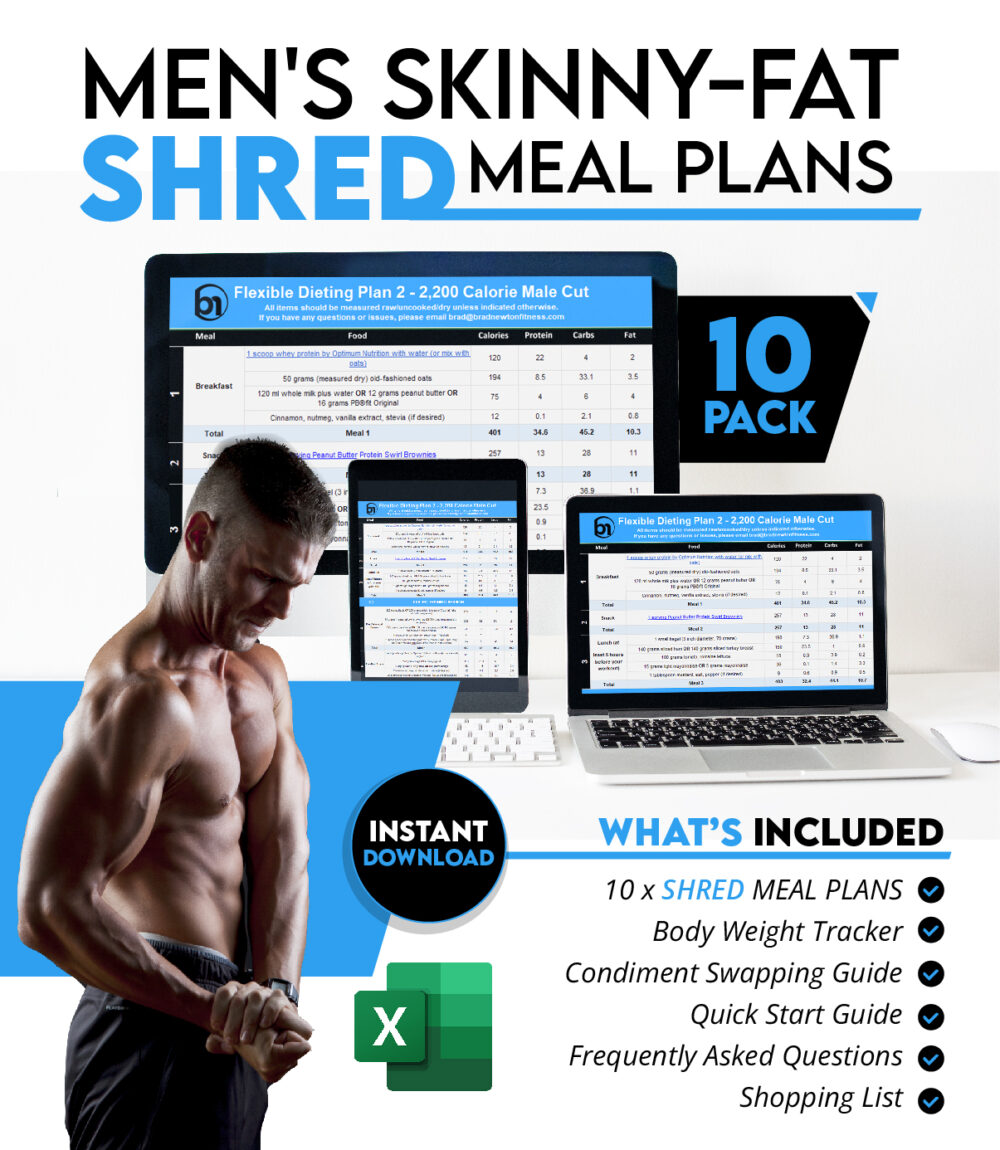Years ago, I was just like you—skinny-fat, frustrated, and completely lost in the gym. I had no clue what I was doing, fumbling around with machines and second-guessing everything I ate. To make things worse, I was terrified of eating too much protein because I’d heard all the myths about it destroying your kidneys. So, despite hitting the gym 3–4 times a week around my brutal night shift roster, I was only eating 75g of protein a day—nowhere near enough to see results.
This is what my physique looked like after eating 75 grams of protein each day and training 3-4 times a week…

😅 “Do you even lift, bro?” Yeah, I used to hear that a lot… until I finally dialled in my protein intake.
When I cranked my protein up to 160–200g per day (adjusting based on whether I was bulking or cutting), my physique completely transformed. Fast forward to March 2025, and I’m now taking in 150–160g of protein daily—and I just smashed my first HYROX event in Brisbane. 💪🔥
Protein is the most important macronutrient when it comes to building muscle, staying lean, and performing at your best. Whether you’re lifting heavy, hitting cardio, or just cleaning up your diet, getting your protein intake right will make a massive difference to your results.
The problem? Most people have no idea how much they actually need. Some chug protein shakes all day, thinking it’ll magically build muscle. Others barely get enough to support basic recovery, let alone muscle growth.
The truth is, your protein needs depend on three things:
✅ Your training intensity (lifting, cardio, hybrid training)
✅ Your body weight (total weight vs. fat-free mass)
✅ Your overall goal (muscle gain, fat loss, maintenance)
In this guide, we’re cutting through the confusion and misinformation so you can get your protein intake dialled in properly. Here’s what we’ll cover:
🔥 Exactly how much protein you actually need (no BS, just science-backed numbers)
🔥 The best times to eat protein for muscle growth and fat loss
🔥 The top protein sources to include in your diet (no, it’s not just chicken and shakes)
If you want to build muscle, drop fat, or just feel and perform better, this is your no-nonsense guide to optimising your protein intake.
Let’s get into it….
What Is Protein and Why Is It Important?
Protein is a macronutrient made up of amino acids, often referred to as the “building blocks of life.” It plays a crucial role in almost every bodily function, from repairing tissues to producing enzymes and hormones.
During digestion, protein is broken down into individual amino acids, which are then used for various functions, including:
✅ Muscle repair and growth – Essential for athletes and those who engage in strength training.
✅ Enzyme production – Supports metabolism and other biochemical processes.
✅ Immune system function – Helps the body produce antibodies to fight infections.
✅ Hormone regulation – Plays a role in insulin production, metabolism, and mood regulation.
Related: Still stuck in the skinny-fat trap? You train hard, eat “healthy,” but still look soft instead of strong—sound familiar? Stop spinning your wheels. I’ll show you exactly how to build muscle, drop fat, and finally get the lean, athletic physique you’ve been chasing 👉 Click here to apply for online coaching today!
Essential vs. Non-Essential Amino Acids
Proteins are made up of 20 different amino acids, which are divided into two categories: essential and non-essential. Essential amino acids cannot be produced by the body and must come from dietary sources such as meat, fish, dairy, and plant-based proteins. Without them, the body cannot perform vital functions like muscle repair, enzyme production, and immune support. Since the body relies on food sources for these amino acids, consuming a well-balanced diet rich in protein is crucial.
On the other hand, non-essential amino acids are produced naturally by the body when needed. This means that even if you don’t get them directly from food, your body can still create them from other nutrients. However, during periods of stress, illness, or intense physical activity, the body’s ability to produce some of these amino acids may be insufficient. This is where conditionally essential amino acids come in—under certain circumstances, the body requires them from dietary sources. Understanding the difference between these amino acids helps in selecting the right protein sources for optimal health and muscle function.
| Essential | Conditionally Essential | Nonessential |
| Histidine | Arginine | Alanine |
| Isoleucine | Cysteine | Asparagine |
| Leucine | Glutamine | Aspartic Acid |
| Lysine | Tyrosine | Glutamic Acid |
| Methionine | Proline | |
| Phenylalanine | Serine | |
| Threonine | ||
| Tryptophan | ||
| Valine |
How Much Protein Do You Really Need?
One of the biggest reasons I was stuck in a skinny-fat body years ago? I was barely hitting 70–80 grams of protein a day—nowhere near enough to support my training. I was lifting hard but under-eating protein, which kept me spinning my wheels. If I’d spent just a little time in my first 18 months of training researching proper protein intake, I wouldn’t have wasted that time making zero progress.
Let’s break down the research behind why increasing your daily protein intake is a game-changer, especially if you have a skinny-fat body type.
If you’re lifting weights and want to build muscle, you need to be aiming for 1.6–2.2 grams per kilogram (0.7–1.0 grams per pound) of body weight per day.
A systematic review and meta-analysis published in the British Journal of Sports Medicine analysed data from 49 studies with 1,863 participants. The results? Protein supplementation significantly increased muscle size and strength when combined with resistance training. But here’s the key takeaway—going above 1.6 g/kg per day didn’t lead to further muscle gains. There’s a limit to how much protein your body can actually use for muscle growth.
If you’re cutting and want to hold onto muscle while dropping fat, then higher protein intake is crucial. Research shows that consuming 1.3 g/kg or more per day helps preserve lean muscle during a calorie deficit. In contrast, falling below 1.0 g/kg per day can lead to muscle loss, which is the last thing you want when shredding.
If you’re training a few times a week (around 3-4 hours total), 1.6 g/kg per day is a solid target. The International Society of Sports Nutrition recommends that strength and power athletes aim for 1.6 to 2.0 g/kg per day to support muscle maintenance and recovery.
Here’s a quick breakdown of protein requirements based on your activity level:
- Sedentary (no training): 0.8–1.2 g/kg
- Light training (2-3 sessions per week): 1.2–1.6 g/kg
- Regular strength training (3-5 sessions per week): 1.6–2.2 g/kg
- Cutting (fat loss phase): 1.8–2.4 g/kg
My Protein Intake (Example Calculation)
If you’ve just started lifting (3-4 sessions per week), you’ll need to increase your protein intake accordingly. Let’s use myself as an example:
- Current Body weight: 90 kg
- Training frequency: 4-5 sessions per week
- Protein target: 90 kg × 2 g = 180 grams per day. I must get this amount of protein 7 days a week!
The biggest mistake I made years ago was lifting weights but eating like a sedentary male. If you’re hitting the gym 3-4 times a week but only eating 70 grams of protein a day, you’re actively reinforcing your skinny-fat physique. Worse still, you’ll probably lose more muscle and make the problem worse.
Related: Still stuck in the skinny-fat trap? You train hard, eat “healthy,” but still look soft instead of strong—sound familiar? Stop spinning your wheels. I’ll show you exactly how to build muscle, drop fat, and finally get the lean, athletic physique you’ve been chasing 👉 Click here to apply for online coaching today!
What If You’re Overweight or Obese?
If you’re carrying excess body fat (25%+ for men, 30%+ for women), you don’t need to use total body weight to calculate protein intake. Instead, 1 to 1.2 grams per pound of fat-free mass is a better target. This ensures you’re getting enough protein for muscle retention without over-consuming. Can’t figure out your fat-free mass? Just use the ‘height-based’ rule or ‘goal body weight rule’ (next sections).
Height-Based Rule of Thumb
Another trick that I share with my online fitness clients to help them quickly and easily determine how much protein they need is by using a height-based rule of thumb for protein intake. Which is…
👉 Consume 1 gram of protein per cm of height per day.
For example, I’m 185 cm tall which means I should aim for 185 grams of protein per day. If you’re 160 cm tall, aim for 160 grams of protein per day. Easy 🙂
Why use this method? Simple—it gives you a quick and easy way to estimate your protein needs without overcomplicating things. It lines up with the evidence-based range of 1.6–2.2 g/kg of body weight for muscle growth, and since taller individuals typically carry more lean mass, it naturally accounts for that too. While it’s not a strict scientific rule, I’ve found this to be a solid shortcut for anyone who doesn’t want to mess around with calculating protein intake based on body weight or fat-free mass.
How to Use Goal Body Weight for Protein Intake
If you’re overweight or obese (25%+ for men, 30%+ for women), using total body weight can overestimate your protein needs. Instead, use your goal body weight to set a realistic target.
Protein Intake (g) = Goal Body Weight (kg) × 2.0–2.4 g/kg
(or 1.0–1.2 g per pound of goal body weight)
For Example:
- Current weight: 120 kg (overweight)
- Goal weight: 80 kg
- Protein target: 80 × 2.2 g = 176g of protein/day
This prevents over-consuming protein while ensuring you preserve muscle during a cut.
Best Sources of Protein
Not all protein sources are created equal. Choosing the right ones ensures you get a well-balanced intake of essential amino acids. Whether you follow a plant-based or animal-based diet, understanding which foods provide the necessary amino acids helps in meeting your daily protein needs effectively. Some sources provide complete proteins, containing all nine essential amino acids, while others may lack one or more and need to be combined with complementary foods.
Both animal-based and plant-based proteins can help you achieve your protein intake goals, but they differ in nutrient profiles. Animal proteins tend to be rich in essential amino acids, vitamin B12, and iron, making them highly bioavailable. Plant-based proteins, on the other hand, provide fibre, antioxidants, and beneficial plant compounds that support overall health. By selecting a variety of protein sources, you can ensure a well-rounded amino acid profile to support muscle repair, immune function, and overall wellness.
Animal-Based Protein Sources
Animal proteins are among the best sources of complete proteins, meaning they provide all essential amino acids in the right amounts. The following protein sources are crucial for maintaining and building muscle mass, supporting hormone production, and enhancing recovery after exercise.
✅ Chicken, turkey, and lean beef
✅ Fish (salmon, tuna, cod)
✅ Eggs and dairy (Greek yoghurt, cottage cheese)
Animal proteins also tend to be rich in highly absorbable iron and vitamin B12, both essential for red blood cell production and energy metabolism. If you consume animal products, including a variety of these sources in your diet will ensure optimal protein intake. Personally, I prefer to get 60-70% of my protein requirements from chicken and turkey with the remaining 30% coming from whey protein shakes.
Plant-Based Protein Sources
Plant-based protein sources can be just as effective as animal proteins for muscle building and overall health—as long as you’re getting enough total protein and essential amino acids. Many years ago, I was a vegan and derived my protein from the following sources:
✅ Lentils, chickpeas, and beans (I used to eat a lot of lentil and chickpea curries!)
✅ Tofu, tempeh, and edamame
✅ Nuts and seeds (almonds, chia, flaxseeds)
✅ Plant-based protein powders (pea, hemp, soy)—my favourite brand of plant-based protein back in those days was Sunwarrior.
At the time, I wasn’t aware that most plant proteins are lower in one or more essential amino acids (especially leucine, which is crucial for muscle protein synthesis). But this isn’t a deal-breaker—you can get around it by eating a variety of plant proteins throughout the day (e.g., rice + beans, lentils + quinoa). Another point to mention is that animal proteins (like chicken, beef, eggs, and whey) are more bioavailable, meaning your body absorbs and uses them more efficiently. Some plant proteins contain anti-nutrients (like phytic acid) that can slightly reduce absorption. That said, processing (e.g., soaking, sprouting, fermenting) can improve digestibility.
Animal proteins have higher leucine levels, which is why they tend to stimulate muscle growth slightly better. But you can still get the same muscle-building effect from plants—it just means eating a bit more total protein or choosing higher-leucine sources like soy, pea, or quinoa.
Can You Eat “Too Much” Protein?
For years, there have been various myths and misconceptions surrounding protein intake. Some people worry that consuming too much protein might harm their kidneys, cause unwanted weight gain, or even be less effective than certain protein sources. However, most of these concerns are based on outdated or incorrect information. Research has shown that high protein diets can be safe and beneficial when consumed in moderation. In this section, we’ll address some of the most common myths related to protein intake and explain the facts behind them.
General Protein Recommendations:
- Sedentary individuals: ~0.8g per kg (0.36g per lb) of body weight
- General fitness enthusiasts: 1.2–2.0g per kg (0.54–0.91g per lb)
- Strength athletes & bodybuilders: 1.6–2.2g per kg (0.72–1.0g per lb)
- Endurance athletes: 1.2–2.0g per kg (0.54–0.91g per lb)
- Hyrox athletes: 1.6–2.4g per kg (0.72–1.1g per lb), depending on training volume and recovery needs.
What Happens If You Eat Too Much Protein?
✅ No extra muscle gain – Beyond ~2.2g/kg (1g/lb), muscle protein synthesis plateaus unless you’re on anabolic steroids.
✅ Excess calories stored as fat – If you’re in a calorie surplus, excess protein can still contribute to body fat gain.
✅ Potential digestive issues – High protein intake, especially from dairy or low-fiber diets, can cause bloating, constipation, or diarrhea.
✅ Increased kidney workload (only if pre-existing issues) – If you have kidney disease, high protein intake may worsen it, but healthy kidneys handle high protein intake without problems.
✅ Possible dehydration – Protein metabolism increases urea production, so you need more water to avoid dehydration.
✅ More expensive diet – Over-consuming protein means spending more money on food or supplements that might not be necessary.
Can Too Much Protein Damages Kidneys?
One of the most persistent myths about protein is the belief that consuming too much can lead to kidney damage. This myth likely originated from studies on individuals with pre-existing kidney conditions, who were found to experience further strain when they consumed high amounts of protein. However, for healthy individuals, research suggests that high-protein diets do not cause kidney damage. In fact, a well-balanced protein intake is essential for maintaining proper kidney function, as it helps in muscle repair, hormone production, and maintaining healthy immune function.
That being said, if you have kidney disease or reduced kidney function, it is important to manage protein intake according to medical advice. In such cases, excessive protein can indeed put added stress on the kidneys, which might worsen existing conditions. If you’re healthy and have no kidney issues, you can safely consume higher protein levels within recommended guidelines, and this should not have a negative impact on kidney health.
What About Protein Powders for Fat Loss
If fat loss is the goal, you want a protein powder that’s as close to pure protein as possible—no unnecessary extras. Personally, I see any carbs or fats in a protein powder as wasted calories. If I’m in a calorie deficit, I’d much rather be eating my calories than drinking them. And that’s a huge mistake I see people make when dieting—drinking their calories instead of focusing on whole foods. Whether it’s fruit juice, sodas, sports drinks, or energy drinks, liquid calories don’t fill you up like real food does.
Think about it—you could drink 1,000 calories and still be starving an hour later. But if you eat a 1,000-calorie meal packed with protein and fibre, you’ll stay full for hours. That’s why research consistently shows that people who drink their calories are far more likely to overeat. It’s also why there’s a clear link between high intakes of sugary drinks and weight gain.
Bottom line? If you’re serious about fat loss, stick to whole foods for satiety and keep your protein powder lean and simple—pure protein, no unnecessary fillers.
🔥 Skinny Fat? Let’s Change That—For Good.
Tired of spinning your wheels with random workouts and confusing diets? My proven coaching system was built specifically for skinny-fat guys who want to build lean muscle, drop stubborn fat, and finally look like they lift.
✅ Step-by-step hypertrophy training (no guesswork)
✅ High-protein meal structure—no boring diets, no starvation
✅ 100% online with real support from me every step of the way


